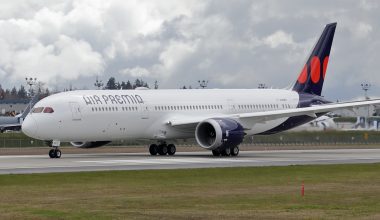It can turn out to be a critical situation if a plane loses all its power, including the hydraulic; at such unfortunate events, it all weighs upon the pilots to land the aircraft safely back on land.

But how do the pilots handle such situations and make a safe landing?
Some aircraft have the manual capability to move the flight control and land them without the need for hydraulic power. On the other hand, other aircraft are built with multiple hydraulic systems(three to four on most) with the intention of backing up the hydraulic system failure near zero. As for the loss of engines, all airplanes can glide to a landing.
Also Read: Air India makes Emergency landing after hydraulic failure
What Is Hydraulic System?
The hydraulic systems are considered the heart of the aircraft; these systems perform the function of moving and actuating landing gears, flaps, and brakes. These systems are both engine-driven and electrically driven for redundancy. Some aircraft have a Ram Air Turbine(RAT), s small airflow driven engine that supplies emergency hydraulic or electrical power to the aircraft. These turbines are generally stowed away behind closed panels during normal flight and are deployed only in the case of total power loss due to multiple engine failures.

Generally, the hydraulic system operates by pressurizing the fluids upon every section of a vessel creating a force and transmitting the pressure on every part. However, the aircraft’s hydraulic systems are pretty different from the pneumatic system, as the systems are not light-weighted as other vessels for the aircraft. In aircraft, the hydraulic system disperses the transmitting force from one point to another in the system. With the displacement of different small systems with an extensive system, the aircraft’s hydraulic system pressurizes the fluid to enforce movement in a specific composition from one position to another, helping the pilot function during the flights.
There is some kind of hydraulically powered components on every type of aircraft; the lighter variants might use limited components providing pressure to activate the wheel brakes, whereas, in larger and more complex aircraft, the hydraulic system is pretty commonly used for different power components.
Purpose of Hydraulic System
The hydraulic system has always been a major component for the functioning of aircraft; in the past, the hydraulic systems were specifically based around hydraulic brakes. But, with the introduction of new technological advancements, modern-day aircraft use the hydraulic system to operate all essential and critical flight components.

Hydraulic systems are used in aircraft to provide flight controls, thrust reversers, and spoilers in heavy aircraft. These systems are used to move and actuate landing gears, brakes, and flaps delivering constant torques regardless of the speed. Also, the significant purpose of installing the hydraulic system in the aircraft is to provide a smooth and safe ride even in case of critical conditions; the system serves the aircraft to have a safe and sound landing.
Generally, the hydraulic system is installed in components like wheel brakes, nose wheel steering, landing gear, slaves and slats, speed brakes, thrust reversers, flight control surface, cargo doors, windshield wipes, propeller pitch control, and other controls depending on aircraft’s development.
Emergency Landing
In general, finding a suitable field without large objects that affects the landing is essential; airplanes stop pretty quickly; if a big obstacle is in the way, it can adversely affect the landing resulting in injuries and fatalities.
Basically, there are three types of an emergency landings in the aviation industry:
Forced Landing: Force landing is an immediate landing on or off an airport premise necessitated by the inability to continue the further journey. The aircraft reaches a condition that makes the further travel impossibly looking for an immediate safe landing. Engine failure is a perfect example of a force emergency landing where the pilots look for a safe location to land the plane that cannot travel any further.

Precautionary Landing: These types of emergency landings are premeditated on or off airport premises. The pilot decides to land the aircraft because traveling any further with the current condition of the aircraft is inadvisable, the further flight is possible but may result in adverse and critical situations. Generally, the precautionary landings are due to bad deteriorating weather, fuel shortage, getting lost, or having problems with the engines.
Ditching: A ditching landing can be both forced landing and precautionary landing in which the pilot crew lands the aircraft on water. Depending on the situation, the pilots decide the perfect landing location, prioritizing the passengers’ safety without taking any chances.






